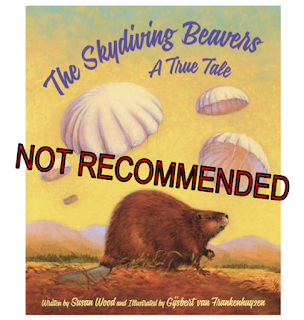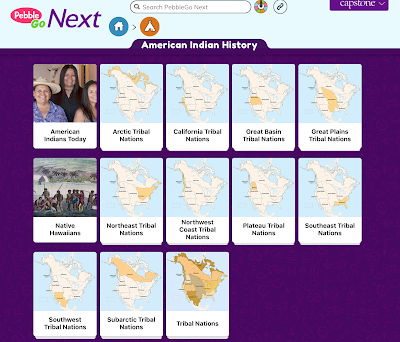On April 13th, the MinnPost ran an interview that Jim Walsh did with me. In it, Walsh asked me what I find most bothersome about the idea of white writers writing Native stories. You submitted a comment in response to what I said and it seems you were hoping I'd see your comment. I tried to reply but had trouble registering for an account. Rather than fuss with the website, I decided to respond here.
As a non-Native author who writes about experience with Native reality and has done it in a unique way that has gained both respect and traction in Native America, I wonder what Debbie Reese thinks of my work and approach in Neither Wolf nor Dog, The Wolf at Twilight, and The Girl who Sang to the Buffalo? I think I’m an outlier who has found a way to write across cultures, and many Native readers and organizations agree. But I always want to hear other opinions. The books are well-known and used in many curricula, so I’m guessing she knows of them. This forum is an odd way to reach out, but it seems like an opportune way to do so. My apologies if this seems like a self-serving comment; it is not intended to be so. It is a way to expand the dialogue that needs to take place so that people’s voices are heard undistorted, but, at the same time, to explore ways that we can keep from balkanizing ourselves so totally that it becomes illegitimate to reach and speak across cultures.
Native America wants the story of the boarding schools known; Deb Haaland wants the story known; I want the story known. Otherwise, I wouldn't have written the book. We need to seize the moment.
A strong NO to getting his book into anybody's hands. People can learn about boarding schools from Native people. It is long past time that white folks -- however well-intentioned -- stopped speaking for/about us.
And well it should be. And I agree that Native people should tell their own stories. But I suspect that you have not read my books or delved into who I am, what my background is, what I do, and why I do it. With a more open mind and heart you might well see that there are some ways to be an ally that do not represent either cultural appropriation or cultural exploitation. I can only control my intentions; I cannot control the response of people to my work. I respect your concern, but I think perhaps you are seeing through a generic lens, which is exactly what non-Native people have done to Native peoples over the years. Do not make the same mistakes from the other side that have been made from the Euro-American side. We need to be larger than that.
Returning to books: I study the data of what gets published. Maybe you don't know about that data. Here's an infographic of books in 2018. Clearly, white writers get far more books published than we do:
If the 25th anniversary edition of your book had been sent to the Cooperative Children's Book Center in 2018 (your anniversary edition came out in 2019), the staff at CCBC would have put it on the list of books by or about American Indians/First Nations. The infographic shows that 23 of the 3,134 books reflected in the data at that moment in 2018 were categorized as being by or about American Indians/First Nations.
My comments: I assume "the silent ones" in your mind are Native peoples. That dedication was one of many things I noted as I read. I think the dedication echoes a stereotypical way of thinking about Native peoples (as silent, without voice), and that it simultaneously signals to readers that you are a good person doing all you can to help us silent ones. Some find it valorous and see you as a good ally to Native people. As a person who studies representations of Native peoples, I see you as another in a long line of white people who are intent on saving us by speaking for us, by telling our stories for us... I know--there are Native people who do think of you as an ally. I don't.
My thoughts: Showing us that vulnerability invites readers to share that tightness along with you. The way you characterize Native concerns seems to belittle them, and ultimately, feels dismissive. The way you wrote those opening paragraphs works to get readers to ally with you but I want to know more about that project and what the books had in them. Did you let parents and grandparents see what was going to be in the book, before publication? Seems that if you had done that, you wouldn't have gotten blow back. You aren't listed as the author of those two books but you lift them up in these opening passages. It seems you're exploiting that project. It sets this whole phone call in motion. It is the set up for how this book came into being.
My thoughts: Your remarks about traditional elders tell readers that you have knowledge about very traditional elders that others may not. You offer that as a reason why the woman's grandfather won't talk on the phone. Something about this feels off to me but I don't have words for it yet.
My thoughts: Earlier, I noted that you tell us the woman wouldn't give you her name, and now, we are not given the name of the reservation. Because I've read the book, I know that this lack of names matters to the success of your book.
We aren't ever going to know the man's name, because he specifically asks you not to share his information. He just wants YOU to tell his stories because he likes what you did with the Red Road books.
That secrecy might feel respectful to readers but to me, it feels very exploitative of your readers. You've written the foreword and intro in a way to disarm criticisms of what you're doing in this book. The "old man" of the chapter title has a request and you're going to honor that request. He trusts you, and we're supposed to trust you, too. But, I don't! All of it feels too tidy.
The upshot of this secrecy is that your name is the only one we know. You are the one who speaks. You are the one who profits from book and movie ticket sales. Maybe you give some of the profits to a Native organization. If you do, that is likely seen as you being a good guy to Native people. Saviorism.
I've got more notes about your book, but I'll pause there to talk about your book being used in schools.
Teacher to class of juniors and seniors in high school: "Today we're going to start reading Louise Erdrich's The Round House. Erdrich is a member of the Turtle Mountain Band of Chippewa. She is the owner of Birchbark Books, a bookstore in Minneapolis. Let's take a look at the website for her tribal nation."
The teacher would use present-tense verbs as they talked about Erdrich, her bookstore, and the tribal website. The opportunities for visibility are many! But--the students don't have that opportunity because they're reading your book instead. That bothers me. I imagine you'll say it isn't your fault that they choose you over a Native writer. You're right. It isn't your fault, but I wonder if you've done anything anywhere to help them find Native writers?
I see that Carter Meland has a comment to you at MinnPost (dated April 14, 2022) and that you replied to him. You refer to the "own voices" movement as a necessary corrective but immediately follow up with a "But" that argues for your own space. I wish you would spend more of your words lifting Native writers than arguing for your own voice.
Debbie




















